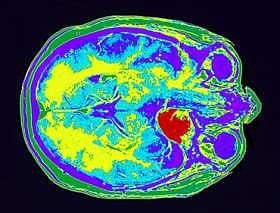Unlocking the Mind: Techniques to Manage Painful Memories
Written on
Chapter 1: Understanding Memory Suppression
Recent research conducted at the University of Colorado reveals that individuals can learn to suppress emotional memories through dedicated practice. This discovery holds promise for those grappling with conditions such as post-traumatic stress disorder (PTSD) and depression.
According to the findings, the study observed brain activity in participants trained to suppress recollections of negative imagery. Two distinct mechanisms within the prefrontal cortex were identified as being actively involved in this process. Lead researcher Brendan Depue noted, "This study may pave the way for new treatments targeting those who struggle to manage distressing memories linked to various disorders, including PTSD, phobias, depression, anxiety, and OCD."
The research, published in Science, was a collaboration between Associate Professor Tim Curran, Professor Marie Banich, and Depue, all of whom are affiliated with CU-Boulder’s Center for Neuroscience and the Institute of Cognitive Sciences. Banich also has ties to the University of Colorado at Denver and Health Sciences Center.
"We demonstrated that individuals can actively suppress specific memories at given moments through consistent practice," Depue explained. "We believe we are beginning to understand the neural mechanisms involved and hope that these findings will inform new therapeutic and pharmacological strategies for addressing various emotional challenges."
Section 1.1: The Study's Methodology
During the study's training phase, participants were tasked with learning 40 distinct pairs of images. Each pair consisted of a neutral human face paired with a disturbing image, such as a car crash, a wounded soldier, a violent crime scene, or an electric chair.
Once the participants memorized the pairs, they donned specialized goggles and entered MRI machines. "Participants were shown only the face images and instructed to either focus on or avoid thinking about the associated disturbing image," Depue elaborated.
Subsection 1.1.1: Brain Imaging Insights

The functional MRI scans conducted during the research indicated that memory suppression coordination occurred in the prefrontal cortex, often referred to as the “seat of cognitive control.” The team discovered that two specific areas of the prefrontal cortex collaborate to inhibit certain posterior brain regions, such as the visual cortex, hippocampus, and amygdala—regions integral to visual recall, memory encoding, and emotional responses.
"The results confirm that memory suppression is indeed possible and, at least in non-clinical populations, is managed by prefrontal regions," the researchers stated in Science. Depue added that the most anterior portion of the prefrontal cortex, highlighted in the study, represents a relatively recent evolutionary development and is significantly more pronounced in humans compared to great apes.
Section 1.2: The Implications of Memory Control
The findings revealed that participants could exert a degree of control over their emotional memories. By effectively shutting down certain brain areas, they could halt the retrieval of specific memories.
Depue speculated that the ability to suppress memories may have evolutionary advantages, citing the example of a prehistoric hunter who narrowly escaped a lion while pursuing antelope. "If that hunter became overwhelmed by memories of the event, he might cease hunting, leading to starvation."
However, Depue acknowledged the complexity of extremely traumatic memories, such as those related to violent experiences or severe accidents. "In such cases, individuals might require extensive training to suppress these memories effectively; we still have much to learn."
The concept of repressed memories, introduced by psychologist Sigmund Freud over a century ago, remains contentious. "There’s ongoing debate about whether repressed and suppressed memories are synonymous, and even about the existence of repressed memories themselves," Depue remarked. "The debate surrounding repressed memories is unlikely to reach a resolution in my lifetime. What's crucial is that we have identified neural mechanisms that could assist the clinical community in developing innovative therapeutic and pharmaceutical solutions for those facing emotional disorders."
Chapter 2: Therapeutic Applications and Future Directions
This video, "How to Forget Painful Memories | Erase Your Memory," delves into techniques for managing and erasing distressing memories, offering insights and strategies for emotional healing.
In this video titled "How To Erase Bad Memories," viewers can explore methods for effectively dealing with negative recollections and improving emotional well-being.
Published with the permission of Andy Wills
Andy Wills’ WebsiteBooks
Available from my Learning Pages bookshop:
New Directions in Human Associative Learning — edited by Andy Wills
Psychology books
Mind, Body and Spirit books
More Wellbeing articles
Become a member to get complete access to all stories.
Thanks for your support!